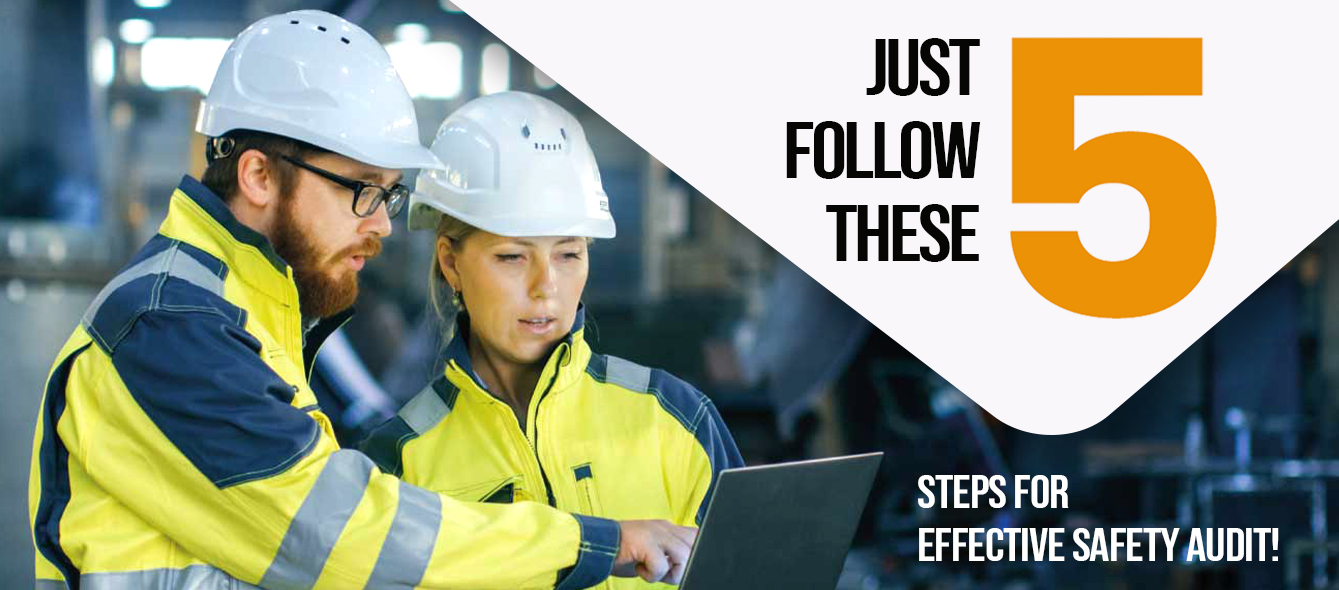
Just follow these five steps for effective safety audit
Workplace hazards can be at times severe and catastrophic, and can even bring the facility to a grinding halt, either temporarily or permanently. If all risks and health hazards are properly documented or rather audited systematically and effective preventive measures are taken as per the existing safety standards and procedures, employers can reduce accidents and related losses.
As prevention is the best cure, conducting regular safety audit at facilities can bring down accidents and near misses to a great extent.
Instead of considering that safety auditing as mere time-consuming exercise, enterprises should engage competent HSE personnel to conduct regular auditing of their facilities quite similar to regular maintenance of machines and tools they do. Facilities that conduct regular safety audit will be better placed to combat workplace hazards.
So, how do you conduct safety audit? Just follow these five steps and you will be on right track to make your workplaces incident-free and healthy.
- Setting the right stage for an Audit
It is important to have right team to perform safety audit. If you are going to have internal audit, then it is highly critical to have a diverse team – people from various sections that include production workers, managers, individuals from various areas of the company. Objective and scope of the auditing should be clearly drawn so that the team can focus on the areas where the auditing needs to be done. If you are hiring external consultants, choosing the experienced team is critical for effective auditing. Internal auditors give better perspective to safety auditing as people who know the nature of the work can provide balanced report about the hazards and risks. As auditing is the specialised field, those who conduct auditing should be trained to follow rules and regulations while auditing.
- Effective audit
Conducting audit can either by using checklists or writing down the observations before making the final report. As the goal should be to improve employee safety, auditors should track workplace processes thoroughly to determine what is working well and how existing system can be improved. Auditors should talk to workers to get additional insight into safety challenges and whether written procedures are followed strictly.
- Auditing report and recommendations
After completing the field work, auditors should compile their report summarizing their findings. The report must include the areas of auditing, credentials of auditors and people interviewed during auditing. The report should be concise and objective highlighting both good and bad. The auditing must provide recommendations to the management for action plans in respective areas to reduce accidents and improve safety standards.
- Priorities the goals
As companies allow auditing team to monitor the implementation of corrective action plan, the report must prioritize the immediate action plans and minor things which can be implemented later.
Audit team should work with managers and supervisors to implement the recommendations as stated in the report. Assigning the tasks and recording the completed works form part of auditing activities.
- Publish Audit Results
Once the auditing report gets the approval from management, it is imperative to inform employees of its content. Such reports either published on the company website or displayed in prominent areas where employees can see and understand the safety status and impending action plans to improve safety.
Regular safety audit can throw lights on the gaps on existing safety system and how quickly those gaps can be bridged to prevent accidents and protect human lives.

 NEBOSH CERTIFICATE
NEBOSH CERTIFICATE NEBOSH DIPLOMA
NEBOSH DIPLOMA IOSH
IOSH SAFETY DIPLOMA
SAFETY DIPLOMA CPD UK
CPD UK ROSPA UK
ROSPA UK FOOD SAFETY
FOOD SAFETY 



